-
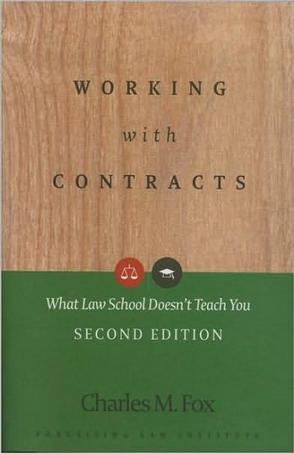
Working With Contracts
Working with Contracts should become a bible for associates in large corporate firms because it offers the reader both basic and more-advanced drafting techniques and concepts. The conscientious reader will be drawn into the subject matter and may likely be surprised that such potentially complex, and perhaps dull, topics could be so inspiring. --New York Law Journal The second edition of Charles Fox's bestselling paperback guide, Working with Contracts: What Law School Doesn't Teach You, updates the original edition published in 2002. The perfect resource for new associates, law school students, business people, or anyone who frequently deals with complex contracts, the Second Edition expands existing material on contract covenants and remedies for breach of a covenant; due diligence conditions; organization of the agreement; credit-related provisions; acquisition-related provisions; the integration clause; and indemnification. Other miscellaneous revisions are found in every chapter of the second edition. In addition, the glossary and the index have been thoroughly revised. In its updated form, Working with Contracts remains the most useful and practical guide for anyone dealing with sophisticated agreements. -
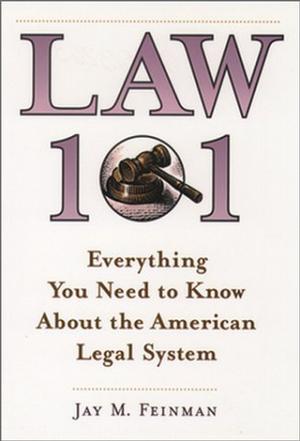
Law 101
Most of us know very little about the law. We pick up bits of information from television and newspaper accounts of current legal battles, and from bestselling novels and popular movies. But these pieces do not give us an accurate or complete picture. In Law 101, Jay M. Feinman offers a delightfully clear introduction to law, covering the main subjects found in the first year of law school and giving us a basic understanding of the American legal tradition. Readers are introduced to every aspect of the legal system, from constitutional law and the litigation process to tort law, contract law, property law, and criminal law. Feinman illuminates each discussion with many intriguing, outrageous, and infamous cases, from the scalding coffee case that cost McDonald's half a million dollars, to the sensational murder trial in Victorian London that led to the legal definition of insanity, to the epochal decision in Marbury v. Madison that gave the Supreme Court the power to declare state and federal laws unconstitutional. He broadens the reader's legal vocabulary, clarifying the meaning of everything from "due process" and "equal protection" in constitutional law, to the distinction between "murder" and "manslaughter" in criminal law. Perhaps most important, we learn that law is voluminous and complex, but accessible to everyone. Anyone who enjoys Court TV will find this book irresistible. Everyone who wants a better grasp of current legal issues, from students contemplating law school to journalists covering the legislature or the courts, will find here a wonderful source of information--a complete, clear, and colorful map of the American legal system. -
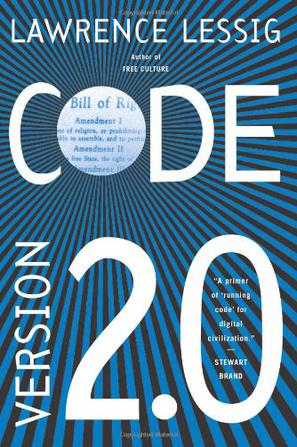
Code
The "alarming and impassioned"* book on how the Internet is redefining constitutional law, now reissued as the first popular book revised online by its readers (* New York Times ) There's a common belief that cyberspace cannot be regulated-that it is, in its very essence, immune from the government's (or anyone else's) control. Code , first published in 2000, argues that this belief is wrong. It is not in the nature of cyberspace to be unregulable; cyberspace has no "nature." It only has code-the software and hardware that make cyberspace what it is. That code can create a place of freedom-as the original architecture of the Net did-or a place of oppressive control. Under the influence of commerce, cyberpsace is becoming a highly regulable space, where behavior is much more tightly controlled than in real space. But that's not inevitable either. We can-we must-choose what kind of cyberspace we want and what freedoms we will guarantee. These choices are all about architecture: about what kind of code will govern cyberspace, and who will control it. In this realm, code is the most significant form of law, and it is up to lawyers, policymakers, and especially citizens to decide what values that code embodies. Since its original publication, this seminal book has earned the status of a minor classic. This second edition, or Version 2.0, has been prepared through the author's wiki, a web site that allows readers to edit the text, making this the first reader-edited revision of a popular book. -
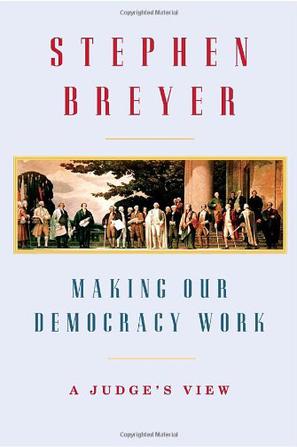
Making Our Democracy Work
The Supreme Court is one of the most extraordinary institutions in our system of government. Charged with the responsibility of interpreting the Constitution, the nine unelected justices of the Court have the awesome power to strike down laws enacted by our elected representatives. Why does the public accept the Court’s decisions as legitimate and follow them, even when those decisions are highly unpopular? What must the Court do to maintain the public’s faith? How can the Court help make our democracy work? These are the questions that Justice Stephen Breyer tackles in this groundbreaking book. Today we assume that when the Court rules, the public will obey. But Breyer declares that we cannot take the public’s confidence in the Court for granted. He reminds us that at various moments in our history, the Court’s decisions were disobeyed or ignored. And through investigations of past cases, concerning the Cherokee Indians, slavery, and Brown v. Board of Education, he brilliantly captures the steps—and the missteps—the Court took on the road to establishing its legitimacy as the guardian of the Constitution. Justice Breyer discusses what the Court must do going forward to maintain that public confidence and argues for interpreting the Constitution in a way that works in practice. He forcefully rejects competing approaches that look exclusively to the Constitution’s text or to the eighteenth-century views of the framers. Instead, he advocates a pragmatic approach that applies unchanging constitutional values to ever-changing circumstances—an approach that will best demonstrate to the public that the Constitution continues to serve us well. The Court, he believes, must also respect the roles that other actors—such as the president, Congress, administrative agencies, and the states—play in our democracy, and he emphasizes the Court’s obligation to build cooperative relationships with them. Finally, Justice Breyer examines the Court’s recent decisions concerning the detainees held at Guantánamo Bay, contrasting these decisions with rulings concerning the internment of Japanese-Americans during World War II. He uses these cases to show how the Court can promote workable government by respecting the roles of other constitutional actors without compromising constitutional principles. Making Our Democracy Work is a tour de force of history and philosophy, offering an original approach to interpreting the Constitution that judges, lawyers, and scholars will look to for many years to come. And it further establishes Justice Breyer as one of the Court’s greatest intellectuals and a leading legal voice of our time. -
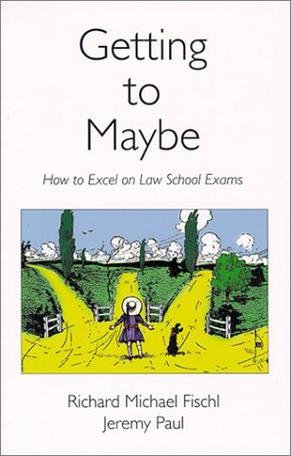
Getting To Maybe
-
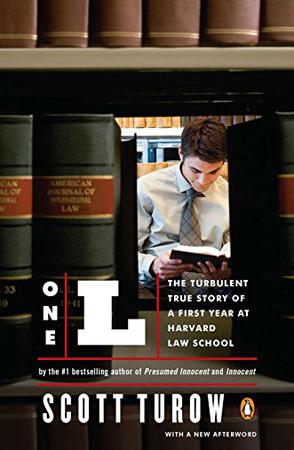
One L
"A wonderful book...it should be read by anyone who has ever contemplated going to law school. Or anyone who has ever worried about being human." - The New York Times It was a year of terrors and triumphs, of depressions and elations, of compulsive work, pitiless competition, and, finally, mass hysteria. It was Scott Turow's first year at the oldest, biggest, most esteemed center of legal education in the United States. Turow's experiences at Harvard Law School, where freshmen are dubbed One Ls, parallel those of first-year law students everywhere. His gripping account of this critical, formative year in the life of a lawyer is as suspenseful, said The New York Times , as "the most absorbing of thrillers."